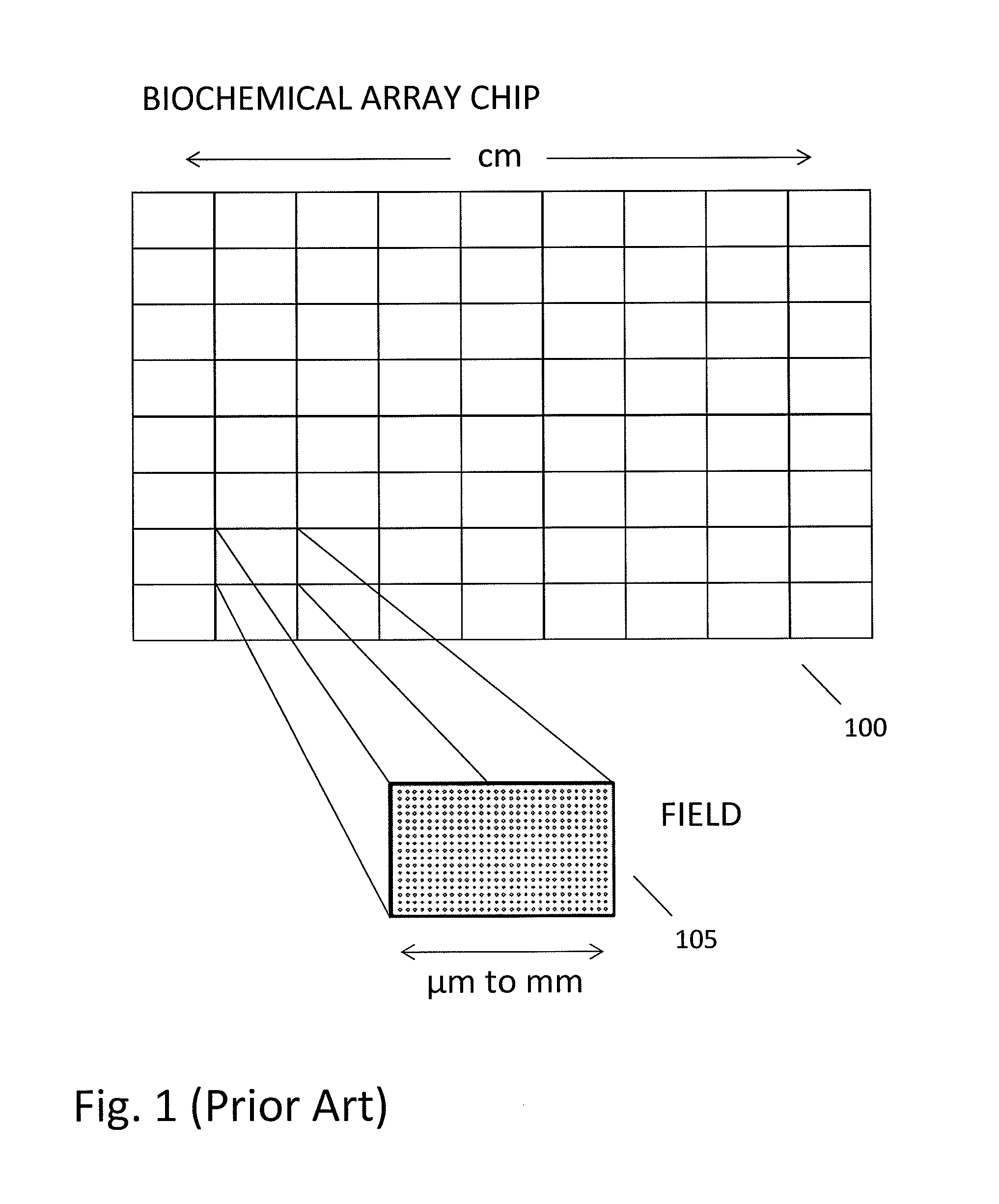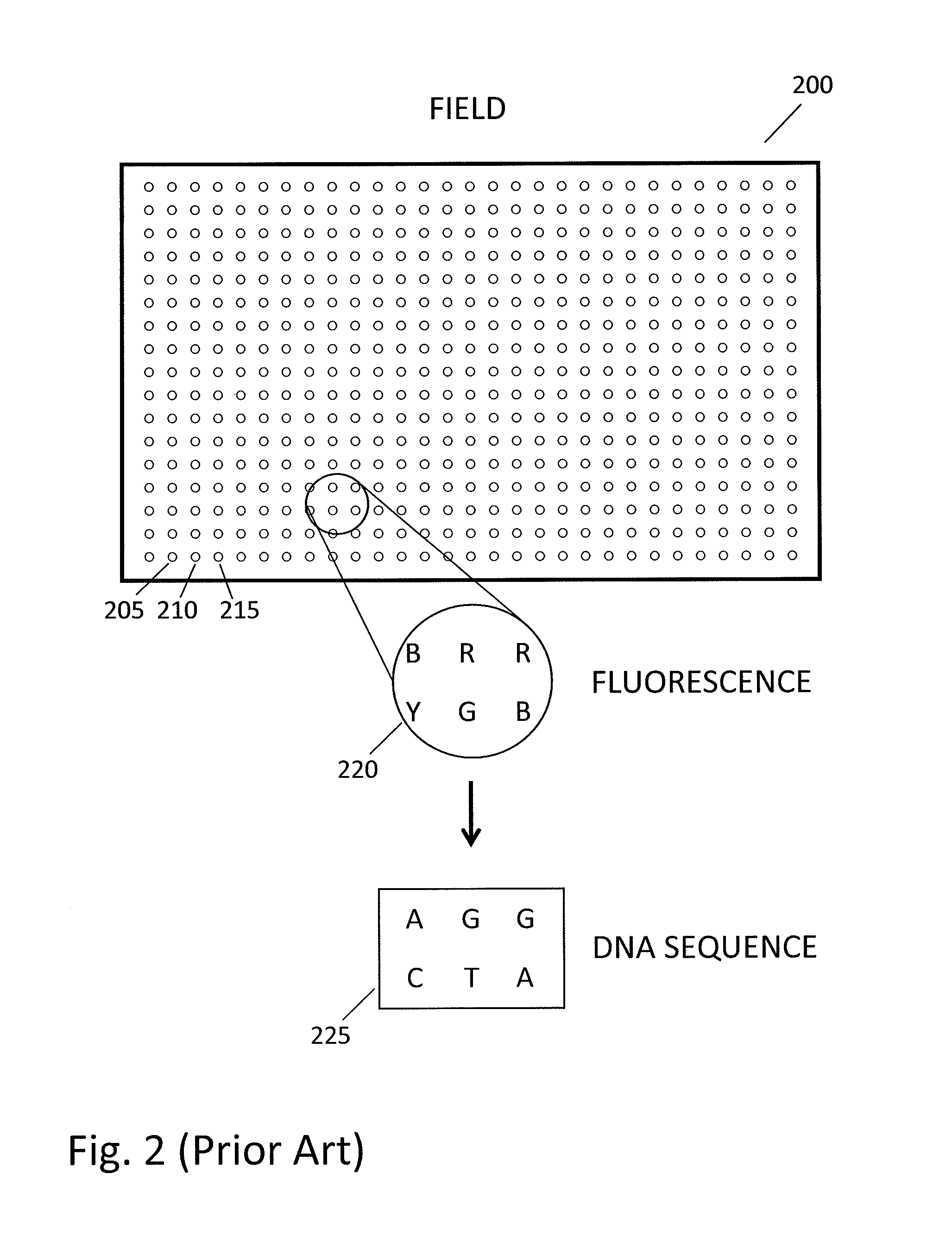Method and system for accurate alignment and registration of array for DNA sequencing
a biochemical array and array technology, applied in the field of biochemical analysis, can solve the problems of limited camera speed and number, direct impact on cost, and inability to accurately identify arrays, etc., to achieve the maximum amount of information extracted, the effect of speeding up the analysis of elements and maximizing the number of useable functionalized sites
- Summary
- Abstract
- Description
- Claims
- Application Information
AI Technical Summary
Benefits of technology
Problems solved by technology
Method used
Image
Examples
Embodiment Construction
[0073]FIG. 3 is a conceptual diagram of imaging and biochemical processing steps used in an array chip assay, as hereinafter described. In FIG. 3, insets 300-320 are similar to inset 220 in FIG. 2 in that they show observations at a few spots on a chip. Insets 300, 310 and 320 show alignment and imaging steps in which fluorescence data are read out; insets 305 and 315 show biochemical processing steps that are performed between imaging steps. The sequence of DNA at one spot on a chip is determined by cycling imaging and biochemical processing steps. For example, in inset 300 one blue fluorescent spot “B” is circled. This same spot fluoresces red in inset 310 (circled “R”) and green in inset 320 (circled “G”). Thus three cycles of imaging and biochemical processing at one spot reveal a fluorescence sequence “B R G” (blue, red, green), which for purposes of example is illustrated in FIG. 3 as corresponding to DNA sequence AGT (adenine, guanine, thymine).
[0074]Each “align and image” st...
PUM
| Property | Measurement | Unit |
|---|---|---|
| width | aaaaa | aaaaa |
| width | aaaaa | aaaaa |
| width | aaaaa | aaaaa |
Abstract
Description
Claims
Application Information
 Login to View More
Login to View More - R&D
- Intellectual Property
- Life Sciences
- Materials
- Tech Scout
- Unparalleled Data Quality
- Higher Quality Content
- 60% Fewer Hallucinations
Browse by: Latest US Patents, China's latest patents, Technical Efficacy Thesaurus, Application Domain, Technology Topic, Popular Technical Reports.
© 2025 PatSnap. All rights reserved.Legal|Privacy policy|Modern Slavery Act Transparency Statement|Sitemap|About US| Contact US: help@patsnap.com



